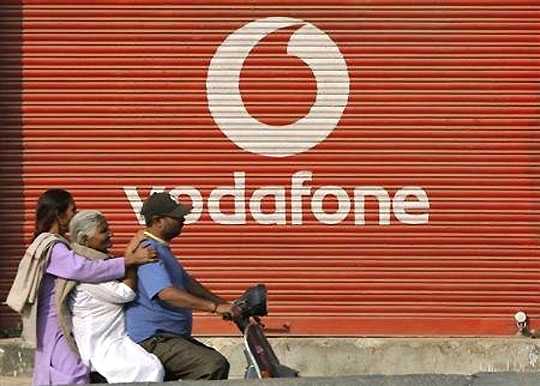Photographs: Courtesy, Blackberry Sounak Mitra
To encourage manufacturing of telecom products in India and reduce import, the government is likely to follow the subsidy model of the Chinese government.
Following a directive by the commerce ministry, the department of telecommunications (DoT) has set up a committee, which will study the viability of the Chinese subsidy model and submit its report in the next few months.
The ministry had earlier commissioned the Indian Council for Research on International Economic Relation (ICRIER) to study innovative incentive schemes in other countries and recommend measures that India could follow.
The ministry gave the directive on the basis of this report.
Please click NEXT for more...
Lessons from China to boost India's telecom sector
Photographs: Kamal Kishore/Reuters
“India’s subsidies in telecom are several years behind those of China and there is a need to synergise product and service development in an integrated way like China has done,” according to the ICRIER report.
Subsidy and incentive schemes for the telecom sector in India are at a nascent stage, especially in the areas of product development, indigenisation of technology and research and development (R&D).
According to a DoT official, the committee would prepare a detailed report on the possible subsidy schemes that India could replicate or innovate, based on the existing practices in China.
Please click NEXT for more...
Lessons from China to boost India's telecom sector
Photographs: Rupak De Chowdhury/Reuters
One of such schemes, said the official, the financial support that the Chinese government offers to companies such as Huawei, has helped them to be competitive, while Indian companies lag.
The DoT official said incentives like 10-year income-tax holiday, excise waiver and low-cost bank loans are likely to be considered initially. At present, 10 per cent excise duty is levied on domestic telecom equipment producers who are not located in special economic zones.
India is projected to import electronic goods worth about $400 billion by 2020, from about $45 billion now.
“A large part of this would be telecom products. We need to reduce this as much possible and we are working towards it,” said the official.
Please click NEXT for more...
Lessons from China to boost India's telecom sector
Photographs: Reuters
Besides imposing tax on import of telecom products, the government needs to look at rationalisation of taxes, tax incentives and developing integrated infrastructure and sale, as has been demanded by the industry for years, according to the ICRIER report.
The proposed concessions, said the official, seeking anonymity, are likely to enable telecom equipment makers competitive against their global counterparts.
The government might also look at providing an interest subsidy of three per cent to telecom product makers for export of their products.
The government has also finalised a blueprint to set up three specific funds, with a combined corpus of Rs 17,500 crore (Rs 175 billion); to help the telecom sector develop a strong domestic manufacturing base, encourage entrepreneurship and promote R&D.
Please click NEXT for more....
Lessons from China to boost India's telecom sector
Photographs: Reuters
These funds would provide its recipients start-up and angel funding, finance incubation centres and offer soft loans, besides giving interest subsidy to banks lending to telecom companies.
According to a study by research agency Ovum, Indian companies will constitute 6.6 per cent of the global demand for telecommunication equipment in 2014-15.
The industry is expected to spend about Rs 46,000 crore (Rs 460 billion) on buying telecom equipment, excluding handsets.
The bulk of this money will, however, be spent on buying imported equipment, mainly from Europe and China.
Please click Next for more...
Lessons from China to boost India's telecom sector
Photographs: Mukesh Gupta/Reuters
The telecom equipment business in India is controlled by five companies — Huawei, ZTE, Ericsson, Nokia Networks, and Alcatel — which have financial muscle to heft in big deals.
According to the Telecom Systems Design and Manufacturing Association (TSDMA), Indian firms that design and manufacture and also have intellectual property, had a three per cent share of the nearly Rs 50,000-crore telecom equipment market in 2012-13.
Foreign companies that have factories in India would raise the share to 10-12 per cent.
But the value added in India is less than 11 per cent, limited to system integration and packaging.
Please click NEXT for more...
Lessons from China to boost India's telecom sector
Photographs: Siphiwe Sibeko/Reuters
According to the Telecom Equipment Manufacturers’ Association, the Indian market for core network equipment, excluding towers and batteries, is worth around Rs 25,000 crore (Rs 250 billion) but local firms do not contribute more than Rs 1,000 crore (Rs 10 billion).
According to local telecom equipment makers, Chinese companies get support from their government and Chinese banks have billions of dollars in credit lines for companies buying Chinese equipment.
The banks offer credit at two per cent interest, payable in 15-20 years and the interest becomes due only from the fifth year.
In February 2012, the government announced a preference policy in which 30 per cent of the orders of government departments would be reserved for local telecom gear makers, which would have to undertake a minimum value addition of 25 per cent.The policy extended the quota to the private sector, too, asking it to source sensitive equipment from local manufacturers.
Please click NEXT for more...
Lessons from China to boost India's telecom sector
Photographs: Akhtar Soomro/Reuters
LEG-UP FOR TELECOM
A committee has been set up by the department of telecommunications to examine the viability of the subsidy model being followed by the Chinese government
The committee is expected to prepare a detailed report on the possible subsidy schemes that India could replicate or innovate
Incentives like 10-year income-tax holiday, excise waiver and low-cost bank loans are likely to be considered initially
Government needs to look at rationalisation of taxes, tax incentives and developing integrated infrastructure and sale
Interest subsidy of three per cent to telecom product makers for export of their products are also on the cards
A blueprint to set up three specific funds, with a combined corpus of Rs 17,500 crore has been finalised










article